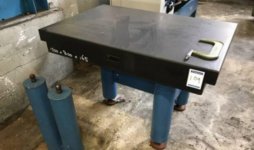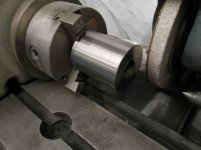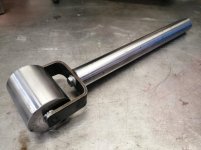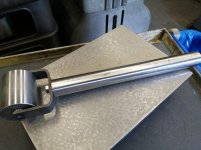Pics of my home-made repeat-o-meter (a.k.a datum gauge). I milled a 1/2" slot in one end then sliced off the lower section and milled the two parts square. I drilled 4 holes for carbide feet made by cutting off broken endmills and fixed the feet into the blocks with loctite. I used a .030" slitting saw to cut four slits for the hinge which is simply a piece of stanley knife blade. Drilled some holes for set screws to use as pinch bolts to clamp the hinge.
View attachment 323250
Once the frame was made I put a 8mm hole to hold the dial gauge and fitted a fine-threaded adjuster wheel on the moving shoe (which consequently I never needed to use). Overall length is 8".
View attachment 323251
It's pretty basic but very easy to make. It reads the movement of the shoe since the indicator is directly above the foot but might equally be reading movement of the middle two feet (which would affect the relative position of the shoe). If you make one of these simple devices it will at least allow you to assess the quality of the surface of your plate. If it shows little or (unlikely) no local deviations you can be pretty sure that globally it will be flat too. What you cannot do is use it to re-assess your plate after doing remedial work without some kind of global checking system because inexperienced lapping will invariably produce a dished surface plate which you must either measure and correct or avoid happening in the first place.
Here's my home-made unit in action:
Dropbox - Repeat o meter.mp4 - Simplify your life
And here is the same plate (last in that video above) after lapping:
Dropbox - Plate lapped 01.mp4 - Simplify your life










